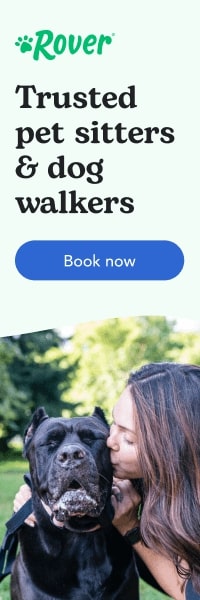Free feeding can be beneficial for some dogs, but it may lead to overeating in others. Each dog's needs vary, so consult your vet for personalized advice.
Free feeding, or leaving food out for dogs to eat at their leisure, has become a common practice among pet owners. This method allows dogs to eat according to their own hunger cues, promoting natural eating habits. However, free feeding isn't suitable for every dog.
Some dogs may overeat, leading to obesity and health issues. Proper portion control is essential for maintaining a healthy weight. Understanding your dog's unique needs and behavior is crucial when deciding on feeding methods. Consider factors like age, activity level, and any existing health concerns to ensure your dog thrives on the right feeding schedule.
Introduction To Free Feeding
Free feeding is a method of providing food to dogs without set meal times. Dogs can eat whenever they want. This approach can be convenient for busy pet owners. However, it may not be suitable for every dog. Understanding the basics of free feeding helps owners make informed choices.
What Is Free Feeding?
Free feeding allows dogs to graze on food throughout the day. Here are some key points:
- No fixed meal schedules.
- Food is available at all times.
- Dogs eat based on their hunger levels.
This method is popular among some dog owners. It can suit dogs who self-regulate their eating. Yet, some dogs may overeat or become picky eaters.
Common Practices In Dog Nutrition
Dog nutrition varies widely among pet owners. Here are common feeding practices:
| Feeding Method | Description |
|---|---|
| Free Feeding | Food available at all times. |
| Scheduled Feeding | Food provided at specific times. |
| Portion Control | Set amounts of food given per meal. |
Choosing a method depends on the dog's needs. Some dogs thrive on a structured schedule. Others may do well with free feeding. Observing the dog's behavior helps in deciding.

Credit: pupford.com
Pros Of Free Feeding
Free feeding can offer several advantages for both dogs and their owners. Understanding these benefits helps you decide if this feeding method suits your pet.
Convenience For Pet Owners
Free feeding provides significant convenience for busy pet owners. Here are some key points:
- Allows dogs to eat at their own pace.
- Reduces the need for strict feeding schedules.
- Simplifies daily routines.
- Helps to manage time better for owners.
This flexible approach benefits families with hectic schedules. It allows dogs to nibble throughout the day. Owners can refill food bowls as needed.
Potential Benefits For Certain Dogs
Free feeding works well for specific types of dogs. Consider the following benefits:
| Type of Dog | Benefit |
|---|---|
| Active Dogs | Energy replenishment when needed. |
| Underweight Dogs | Encourages more frequent eating. |
| Multi-Pet Households | Reduces competition for food. |
| Senior Dogs | Allows grazing to maintain energy. |
Free feeding can help active dogs maintain energy levels. It also supports underweight dogs in gaining weight. For multiple pets, it minimizes food rivalry.
Senior dogs benefit from eating smaller portions throughout the day. This method can enhance their overall well-being.
Cons Of Free Feeding
Free feeding may seem convenient for many dog owners. However, it comes with some notable drawbacks. Understanding these cons helps you make informed choices about your dog's feeding routine.
Risk Of Obesity
One major concern with free feeding is the risk of obesity. Dogs can easily overeat when food is available all day. This leads to weight gain and health issues.
- Obesity can cause joint problems.
- It increases the risk of diabetes.
- Heart disease is more common in overweight dogs.
Monitoring your dog's weight becomes challenging. Many owners don't realize their dog is overweight until it's too late. Regular weigh-ins help, but they can be overlooked.
Difficulty In Monitoring Food Intake
Another downside is the difficulty in monitoring food intake. Without a feeding schedule, you cannot track how much your dog eats. This is crucial for their health.
| Monitoring Issue | Impact on Health |
|---|---|
| Overeating | Leads to weight gain |
| Undereating | Causes malnutrition |
| Food preferences | Encourages picky eating |
Free feeding can also create food-related behavioral issues. Dogs may guard their food. This can lead to aggression towards other pets or people.
Establishing a routine helps dogs feel secure. It also makes it easier to monitor their health. Consider these factors before choosing free feeding for your furry friend.
Impact On Dog Behavior
Free feeding can significantly affect your dog's behavior. Dogs thrive on routine. They often feel secure with a consistent feeding schedule. Free feeding may disrupt this sense of security. Understanding its impact helps dog owners make informed choices.
Effects On Food Aggression
Food aggression is a common issue among dogs. This behavior can stem from various factors, including feeding methods. Free feeding may lead to:
- Increased competition: Multiple pets may fight for food.
- Resource guarding: Dogs might protect their food bowl aggressively.
- Stress and anxiety: Dogs may feel insecure about food availability.
Owners should monitor their dogs closely. Early intervention can prevent serious behavior problems.
Influence On Feeding Habits
Free feeding can alter your dog's natural eating habits. Dogs may develop unhealthy behaviors, such as:
- Grazing: Dogs may nibble throughout the day.
- Overeating: Access to constant food can lead to obesity.
- Picky eating: Dogs may become selective with food.
Establishing a regular feeding schedule encourages better habits. Dogs learn to expect meals at specific times.
Health Implications
Free feeding can affect a dog's health in various ways. Understanding these implications helps dog owners make informed choices. Some health issues arise from unrestricted food access.
Concerns For Dogs With Special Diets
Dogs with specific dietary needs require careful meal planning. Free feeding complicates this process significantly. Here are some concerns:
- Weight Management: Dogs on special diets may gain weight.
- Food Allergies: Free access makes it hard to track allergies.
- Health Monitoring: Owners cannot monitor food intake accurately.
- Medication Compatibility: Certain diets work with medications.
Following a strict feeding schedule is crucial for these dogs. It ensures they receive the right nutrients and avoid harmful foods.
Long-term Health Consequences
Long-term free feeding can lead to serious health issues. Here are some potential consequences:
| Health Issue | Description |
|---|---|
| Obesity | Excessive weight can lead to diabetes and joint problems. |
| Digestive Problems | Irregular eating patterns may cause gastrointestinal distress. |
| Behavioral Issues | Free feeding can lead to food guarding and aggression. |
| Dental Problems | Improper eating habits can result in plaque buildup. |
Regular feeding schedules promote better health. Monitoring food intake aids in early detection of issues.

Credit: crossbonesdog.com
Alternatives To Free Feeding
Free feeding is not the best choice for every dog. It can lead to overeating and obesity. Here are effective alternatives to maintain your dog’s health.
Scheduled Feeding Times
Scheduled feeding times help regulate your dog's eating habits. Set specific times for meals. Dogs thrive on routine. Regular feeding times can:
- Promote a healthy weight.
- Improve digestion.
- Enhance training opportunities.
Choose two to three meals each day. This method encourages discipline. Dogs learn to anticipate their meals.
Portion-controlled Meals
Portion-controlled meals are essential for managing your dog's weight. Measure the food according to your dog's needs. Use the following guidelines:
| Dog Size | Daily Food Amount |
|---|---|
| Small (up to 20 lbs) | 1/2 to 1 cup |
| Medium (21 to 50 lbs) | 1 to 2 cups |
| Large (51 to 90 lbs) | 2 to 4 cups |
| Giant (over 90 lbs) | 4 to 6 cups |
Adjust portions based on your dog's activity level. Regular weigh-ins help track progress. Consult your vet for personalized advice.
Expert Opinions
Understanding expert opinions helps dog owners make informed choices. Different professionals offer valuable insights on free feeding dogs.
Veterinarians' Recommendations
Veterinarians often have a clear stance on free feeding. Many recommend structured feeding schedules for various reasons:
- Weight Management: Free feeding can lead to obesity.
- Digestive Health: Scheduled meals aid digestion.
- Behavior Control: Routine feeding can reduce anxiety.
Some vets suggest specific methods:
- Measure food portions.
- Feed twice a day.
- Monitor your dog's weight regularly.
Behaviorists' Insights On Feeding Schedules
Animal behaviorists have valuable insights on feeding practices. They emphasize the importance of routines:
- Behavioral Patterns: Dogs thrive on predictability.
- Training Opportunities: Scheduled feeding aids training.
- Socialization: Eating together can foster bonds.
Experts suggest these strategies:
| Strategy | Description |
|---|---|
| Set Meal Times | Establish specific times for feeding. |
| Limit Food Access | Restrict food to specific hours. |
| Monitor Behavior | Observe how your dog reacts to meals. |
Making The Right Choice
Choosing the best feeding method for your dog is essential. Free feeding can seem convenient. Yet, it may not be suitable for every dog. Understanding your dog's needs is crucial. This helps you make an informed decision.
Assessing Your Dog's Needs
Each dog is unique. Consider the following factors:
- Age: Puppies and seniors have different needs.
- Activity Level: Active dogs may require more food.
- Health Conditions: Medical issues might affect diet.
- Breed: Some breeds have specific dietary requirements.
Observe your dog's eating habits. Signs of overeating include:
- Weight gain
- Food guarding
- Frequent vomiting
Regular vet visits can help assess your dog's health. Discuss feeding methods during these visits. Your vet can provide personalized advice.
Transitioning Feeding Methods
Switching from free feeding to scheduled meals requires care. Follow these steps:
- Choose a consistent feeding schedule.
- Offer measured portions of food.
- Remove uneaten food after 15-30 minutes.
- Monitor your dog’s weight and behavior.
Make the transition gradual. This helps your dog adjust. Use positive reinforcement to encourage new habits. Offer praise or treats when your dog eats at the scheduled time.
Be patient. Some dogs adapt quickly, while others need time. Regularly review your dog’s progress. Adjust portions as needed. Find the right balance for your furry friend.

Credit: optimeal.com
Frequently Asked Questions
Is Free Feeding Safe For My Dog?
Free feeding can be safe for some dogs, but it depends on their eating habits. Some dogs may overeat or become picky if food is always available. It's essential to monitor their weight and behavior. Consult your vet to determine if free feeding is suitable for your dog's specific needs.
What Are The Benefits Of Free Feeding Dogs?
Free feeding allows dogs to eat at their own pace, which can reduce anxiety around meal times. It can be convenient for busy owners and helps maintain a consistent food intake. However, it may not suit all dogs. Consider your dog's health and habits before choosing this method.
How Does Free Feeding Affect A Dog's Weight?
Free feeding can lead to weight gain if dogs overeat. Some breeds are more prone to obesity and may not self-regulate their food intake. Regularly monitor your dog's weight and adjust feeding methods if necessary. Consulting a veterinarian can provide personalized advice on maintaining a healthy weight.
Can Free Feeding Cause Behavioral Issues In Dogs?
Yes, free feeding can contribute to behavioral problems in some dogs. It may lead to food guarding or increased anxiety around food. Additionally, dogs might develop picky eating habits. Observing your dog's behavior during feeding can help identify any issues that arise from this feeding method.
Conclusion
Free feeding can work for some dogs but poses risks for others. It's essential to consider your dog's eating habits and health. Monitoring portion control is vital for preventing obesity. Consult your veterinarian to find the best feeding method for your furry friend.
A balanced approach ensures your dog stays healthy and happy.














